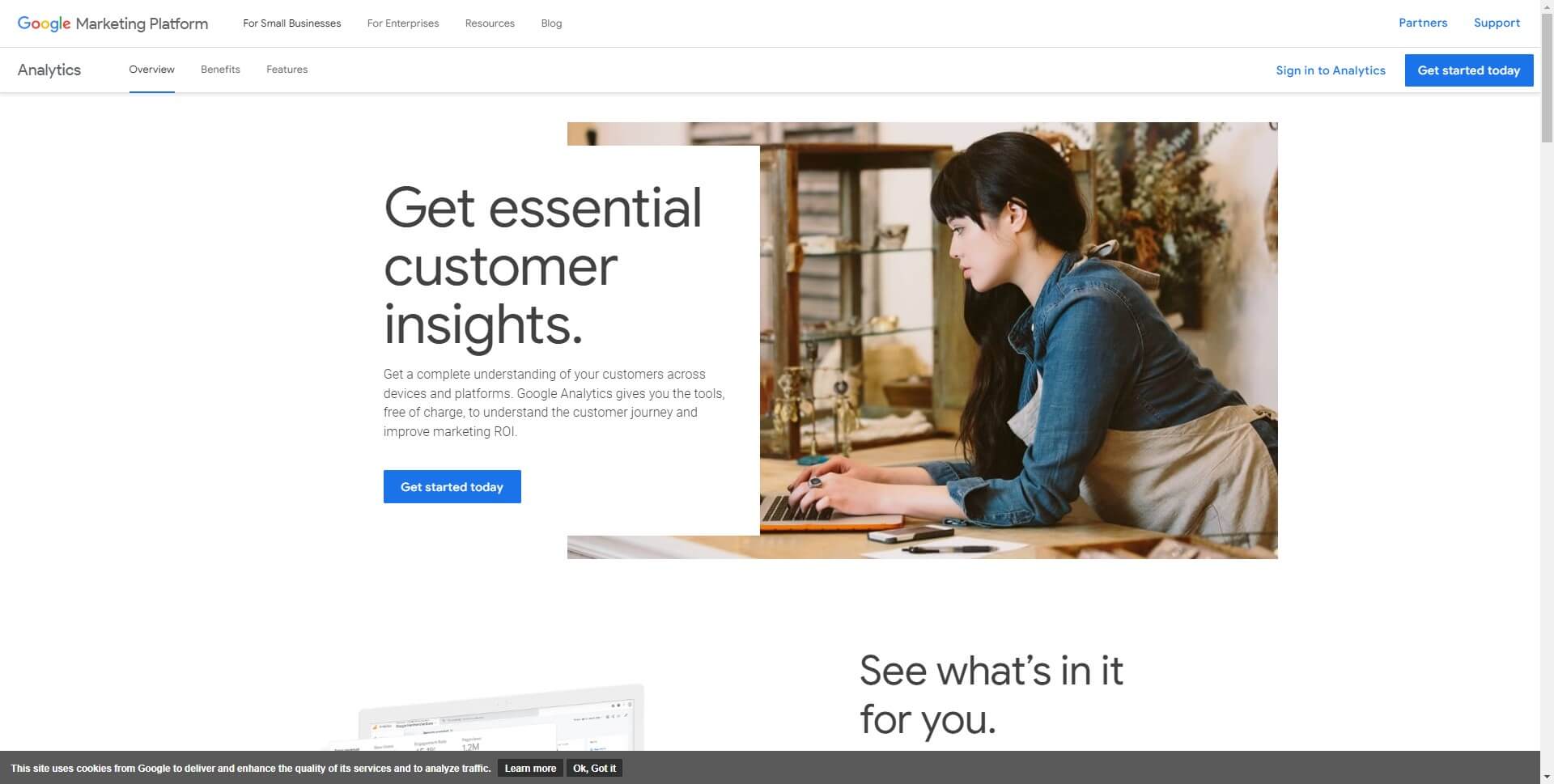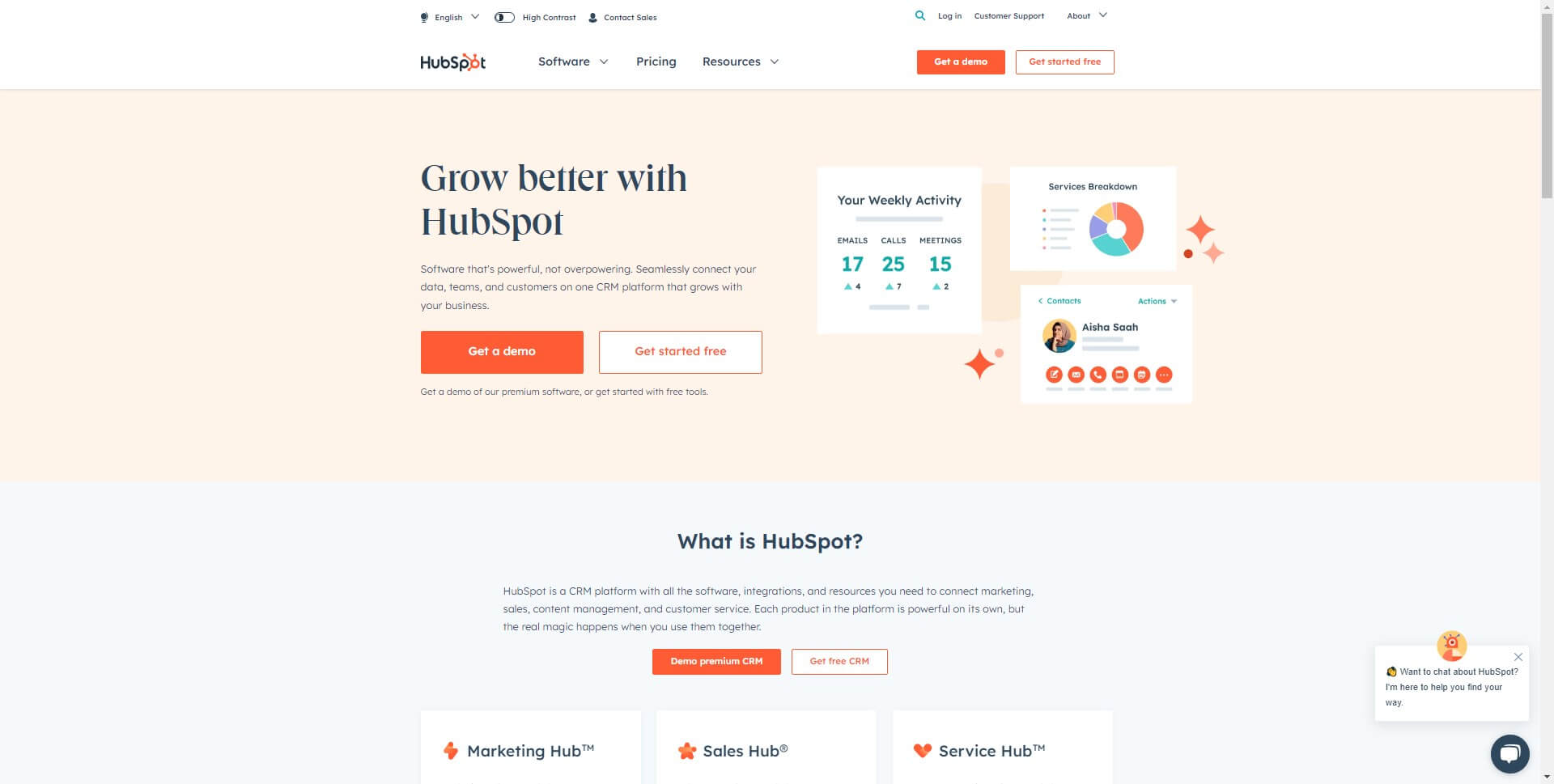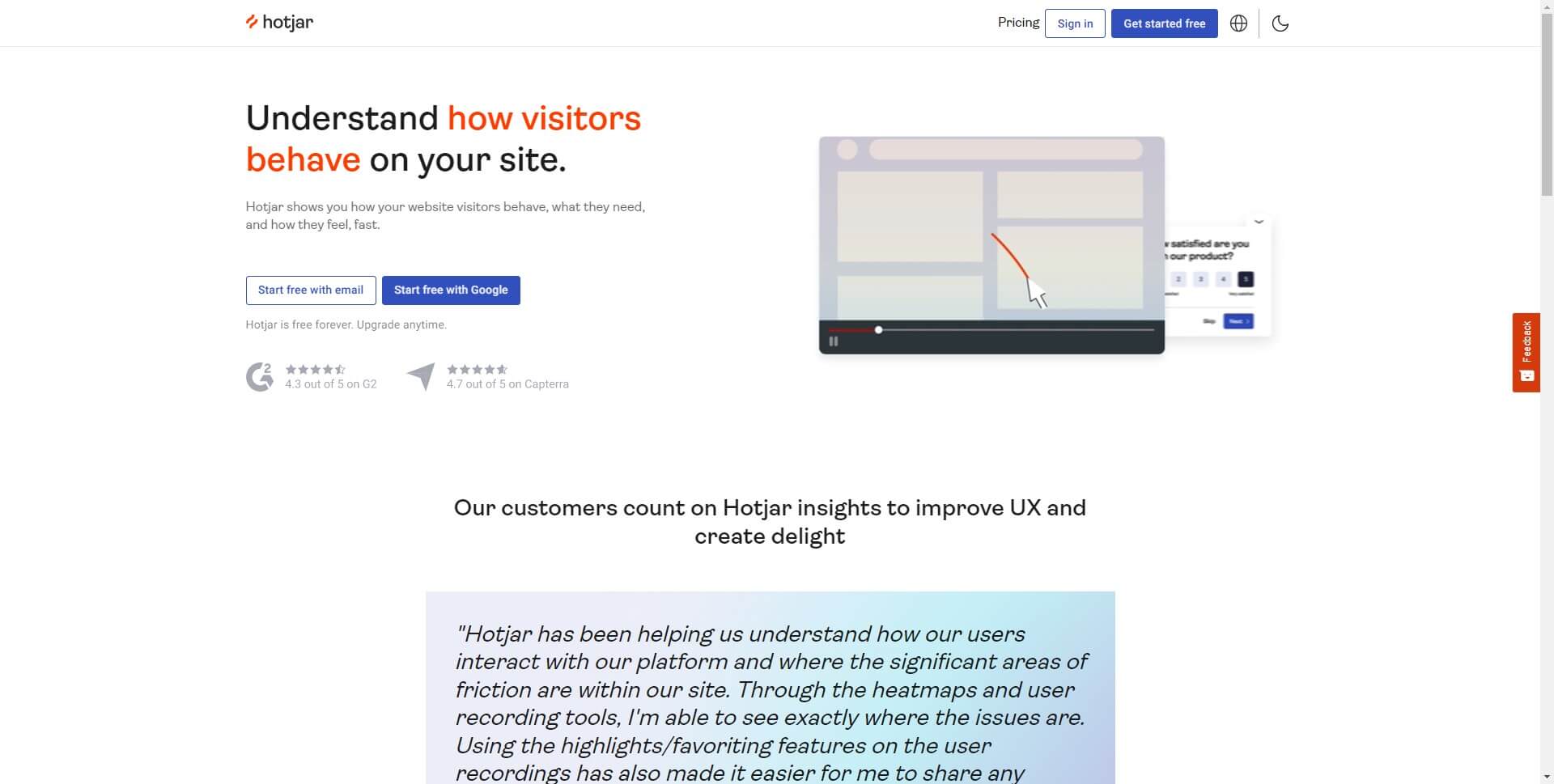Website Management for Business Success: A Step by Step Guide
Category: Web Design

9 mins read
Your website is the foundation of your digital brand. Comprehensive website management ensures it continues functioning well, ranks highly and achieves key goals. But maintaining an effective site requires ongoing work. This guide explores what website management involves, why it's critical and how to build a practical plan. You'll learn how to monitor site performance, improve page rank and use analytics to reach your target audiences.
In this article:
Part 1. What Is Website Management
Website management refers to the ongoing tasks required to keep your site functioning well, looking professional, and achieving key goals. In simple terms, website management means taking care of your site.
It incorporates a range of responsibilities, including:
- Content updates: Adding blog posts, new pages, photos, videos, and keeping information fresh.
- Design changes: Tweaking the layout, color scheme, and features to improve the user experience.
- SEO optimization: Using search engine friendly content, page titles, images, and more to rank higher in Google and drive organic traffic.
- Blog posting: If you have a blog, creating and publishing posts regularly to keep people engaged.
- Page speed: Ensuring your site loads quickly through compressing images, reducing server response times, and optimizing code.
- Security: Performing updates and patches to protect user data and accounts on your website from threats.
- Customer service: Handling contact forms, chatbots, reviews, and monitoring social media for any website-related issues or questions.
- Technical maintenance: Addressing any errors, downtime, or software updates required to keep your site stable and functioning properly.
You have a few options for managing a website. One is the in-house where your own team handles it, working with an agency that provides website management services. Or you can choose a hybrid approach where you do some in-house and outsource other parts. The right solution depends on your needs, priorities, and available resources or budget.
Good website management positively impacts your search traffic, lead generation, customer experience, and ultimately your bottom line. Treat your site as a strategic asset by maintaining and optimizing it regularly. Your business depends on the digital face it presents to the world.
Part 2. Why Is Website Management Important
Your website is often the first digital interaction people have with your business. It shapes how credible, professional, and trustworthy your brand seems. Comprehensive website management directly impacts visibility, traffic, customer experience, lead generation, and revenue.
Without ongoing management, your site may load slowly, contain outdated information, lack visual appeal or have technical issues. This frustrates visitors and makes a poor first impression, driving people away rather than attracting them. Only by managing your site well can you achieve the opposite effect. Let’s discuss the importance of web management:
- Cultivate an Engaged Audience and Customer Base
- Boost Your Online Visibility and Traffic
- Increase Conversions and Revenue
Fresh, optimized content, an inviting layout, and seamless functionality keep people on your site longer and make them more willing to inquire about your services or return in the future. Engaged site visitors develop into customers and loyal brand advocates over time through relevance, value and positive experiences delivered.
Most website traffic comes from organic search rankings. Website management focuses heavily on SEO through content, page titles, internal links, load speed, and more. Higher visibility in search results brings more targeted traffic to your site, especially for competitive terms related to your business. More traffic means more opportunities to convert interested individuals into customers.
A well-managed site has clear calls-to-action, simple checkout processes, lead generation forms, and high-value content to spur action. Easy website navigation and functionality also encourage more conversions and sales. Combine this with marketing personalization powered by web analytics and you have a recipe for increasing sales, leads, and customer spend over the long run through a stellar digital experience.
Part 3. How to Manage Your Website
1. Build a Strategic Website Management Plan
Your plan should consider both short and long-term objectives to address immediate issues as well as opportunities for improvement over the next 6-12 months or more.
Start by defining your primary goals. Do you want to increase organic traffic by 25% over the next 6 months? Generate more leads through the website? Improve your page load speed score and mobile-friendliness? Establish key performance indicators or KPIs to track how well your site is meeting goals. Things like traffic levels, bounce rates, lead capture rates, page load times, and SEO metrics.
Figure out ownership by determining who handles which areas of website management. You may manage some tasks internally with your own team but outsource others to a web design agency or IT consultant. Common duties include content creation or updating, technical fixes, design changes, customer service issues, SEO and overall site optimization. Create an editorial calendar for maintaining a regular blog or update schedules for refreshing other content.
Monitor your KPIs and performance to see how well your plan achieves key goals and make adjustments as needed. Review and revise your website management plan every 6-12 months to account for changes with your business priorities, target audience or strategies and technology updates that could impact your site. Think of your plan as a living document rather than static—keep optimizing and improving it to maximize your website's potential.
Focus your time and resources on the areas that matter most for your business like lead generation, customer experience, increasing traffic or driving more sales and revenue through your digital channels. Your website management plan ensures you maintain a strategic approach rather than reacting when issues come up. Develop a practical plan tailored to your unique needs and website goals to keep it delivering real results and value over both the short and long run.
2. Focus on SEO, Page Speed and Optimization
Search engine optimization or SEO improves how Google indexes and ranks your website in results for relevant keywords and search terms. Higher visibility in search results means more targeted traffic to your site, especially for competitive terms related to your products, services or industry. SEO requires ongoing monitoring and work to maintain or improve rankings.
Core elements of good SEO include:
- Optimized page titles and meta descriptions: Make sure each page has a unique title and meta description that includes your target keyword for that page where it makes sense. The meta description is the short blurb under the page title in search results.
- Quality content: Web content management also matters. Well-written content focused on your target keywords throughout your site. Blog posts, service pages, resources and more. Fresh, comprehensive content also gives Google more to index and rank.
- Image ALT text: Include keyword-optimized ALT text or image descriptions to help Google understand the topic and subject of images on your site.
- Internal linking: Link to other relevant content and categories on your site to create connections for Google's algorithm. Internal links also improve user experience.
- Page load speed: A fast loading site keeps visitors and boosts your search rankings. Compress images, reduce redirects, and optimize code to improve your score. Page speed is a ranking factor.
- Mobile-friendliness: With many searches now on mobile devices, Google favors mobile-friendly sites in results. Ensure your site passes the Google Mobile-Friendly test.
- Error fixing: Check regularly for any 404 errors or broken links on your site and fix them. Errors confuse Google's algorithm and frustrate visitors.
- Metadata: Include relevant category, tag and author metadata on blog posts and pages to give Google more context for the content.
- XML sitemap: Submit an XML sitemap to Google Search Console so Googlebot can more easily discover new or updated content on your site.
Optimizing and monitoring these elements help maximize your traffic and search rankings. Improvements may take 3-6 months to fully impact your visibility, so consistent effort and patience pay off. SEO is an ongoing process requiring regular work to sustain rankings and drive opportunity.
3. Create Engaging Content and Iterate
High-quality, relevant content gives people a reason to visit your website and keep engaging with your brand. But creating content once is not enough. To be effective, you need to refresh and optimize content routinely based on how it's performing. This is known as content iteration.
Refresh your website content routinely based on how it performs to keep visitors engaged. This means:
- Blog weekly or 2-3 times a month. Monitor traffic and shares to improve posts and produce more of the popular content types.
- Update pages like About Us and Services every 6-12 months to keep information current. Consider seasonal versions for some pages.
- Review heatmaps, session recordings and behavior flows to optimize content layout, calls-to-action, navigation. Make improvements to enhance the user experience.
- Add interactive and visual elements like video, quizzes and infographics where it suits your audience and goals. See what gets the most interest to do more of that style of content.
- Check metrics on how long people read or view content, traffic sources and shares or likes. Look for opportunities to optimize and also create content based on high-performance topics or formats.
- Refresh testimonials, case studies and multimedia content routinely. Static content loses impact over time.
Dynamic, high-quality content that provides real value will make your site a resource people want to continually revisit. But it requires ongoing iteration through evaluation, experimentation and improvements to have the greatest impact on your key metrics and business goals.
Monitor performance, optimize based on behavior and results, then optimize some more. Website content is never truly done—it's a cycle that requires constant attention and evolution to remain effective, engaging and relevant for your target audiences. The companies that gain the most success and loyalty through their content and digital platforms are those that never stop improving and innovating the experience.
4. Use Analytics Tools to Monitor Performance
Web analytics tools track how visitors discover and engage with your website. They provide data and insights to help optimize your content, design and overall digital experience. Some of the key analytics platforms are:
- Google Analytics: Free tool to monitor traffic sources, page views, average time on site, bounce rates, conversion funnels and more. See what content and landing pages perform best to improve them further. Gauge how well your site meets key performance indicators or KPIs. Google Analytics requires adding a site tracking code but offers comprehensive data.
- HubSpot: All-in-one marketing and sales software that includes built-in analytics and reports to help you analyze traffic and behavior on your website or blog. Track visitors, page views, average time on page and other metrics to tailor your content and customer experience. HubSpot does offer paid plans but may suit smaller businesses.
- Hotjar: Service that lets you see how real people are interacting with your site through heatmaps, conversion funnels, form analytics and user feedback options like surveys. Watch recordings of actual visitor sessions on your site to pinpoint issues with content layout or calls-to-action and make improvements. Hotjar works as both a desktop and mobile app with reasonable subscription rates.
- SEMrush: Competitive intelligence tool that provides analytics on your own website along with researching your competitors. Track keyword rankings, organic traffic and position changes, find weaknesses in your content or technical SEO and monitor backlinks. SEMrush offers paid memberships but a lot of helpful data for improving your overall search marketing strategy based on analytics.




5. Keep Your Site Up to Date Through Regular Updates
Websites require ongoing maintenance and updates to functionality, design, content and software or platforms to keep working well, protect user data and stay visually modern. Regular incremental updates should be part of your long-term website management plan.
- Content updates: Refresh content like blog posts, service pages or resources at least every 6-12 months, more frequently for some sections. Rotating content, especially on homepage and product pages, keeps information relevant and engaging.
- Design tweaks: Update fonts, color schemes or page layouts over time to keep style consistent with current visual trends. Make minor incremental changes rather than major redesigns. Look for small fixes that enhance page appeal or user experience.
- Functionality changes: Improve site navigation, add new features, use latest web plugins and integrate current ecommerce or advertising options based on platforms. Evaluate any user experience issues or checkout problems to remedy through upgrades.
- Security updates: Update platforms like WordPress core files, plugins, ecommerce software, forms, chatbots and any other third-party integration or open-source application used. Security updates patch vulnerabilities to prevent threats. They should be installed regularly as available for maximum website protection.
- Stock content: Rotate stock photos and multimedia content to freshen up your site and keep the overall brand image current. Free stock imagery abounds and can be swapped in to maintain visuals.
- Platform upgrades: For web content management systems like WordPress, upgrade to the latest version every 6-12 months and no less than every 2 years. Newer versions have improved security, speeds, features and site functionality. SQL database updates may also be required. It's best done by a web developer to minimize downtime or issues.
- Software patches: Install updated patches available for your web host control panel, website builder software, forms, ecommerce platforms or other applications powering your site to optimize performance and plug any security holes as needed.
Conclusion
This article covers why website management matters for performance and growth, what tools you need for insight, and how to keep your website thriving in the face of changing technology, user habits, and business environments. Continuous progress and monitoring are key - if you choose to ignore your site, you also choose to miss out. With work and refinement, your website can fuel vision; without them, it fails to fulfill purpose. Evolution drives possibility on the digital frontier.




















